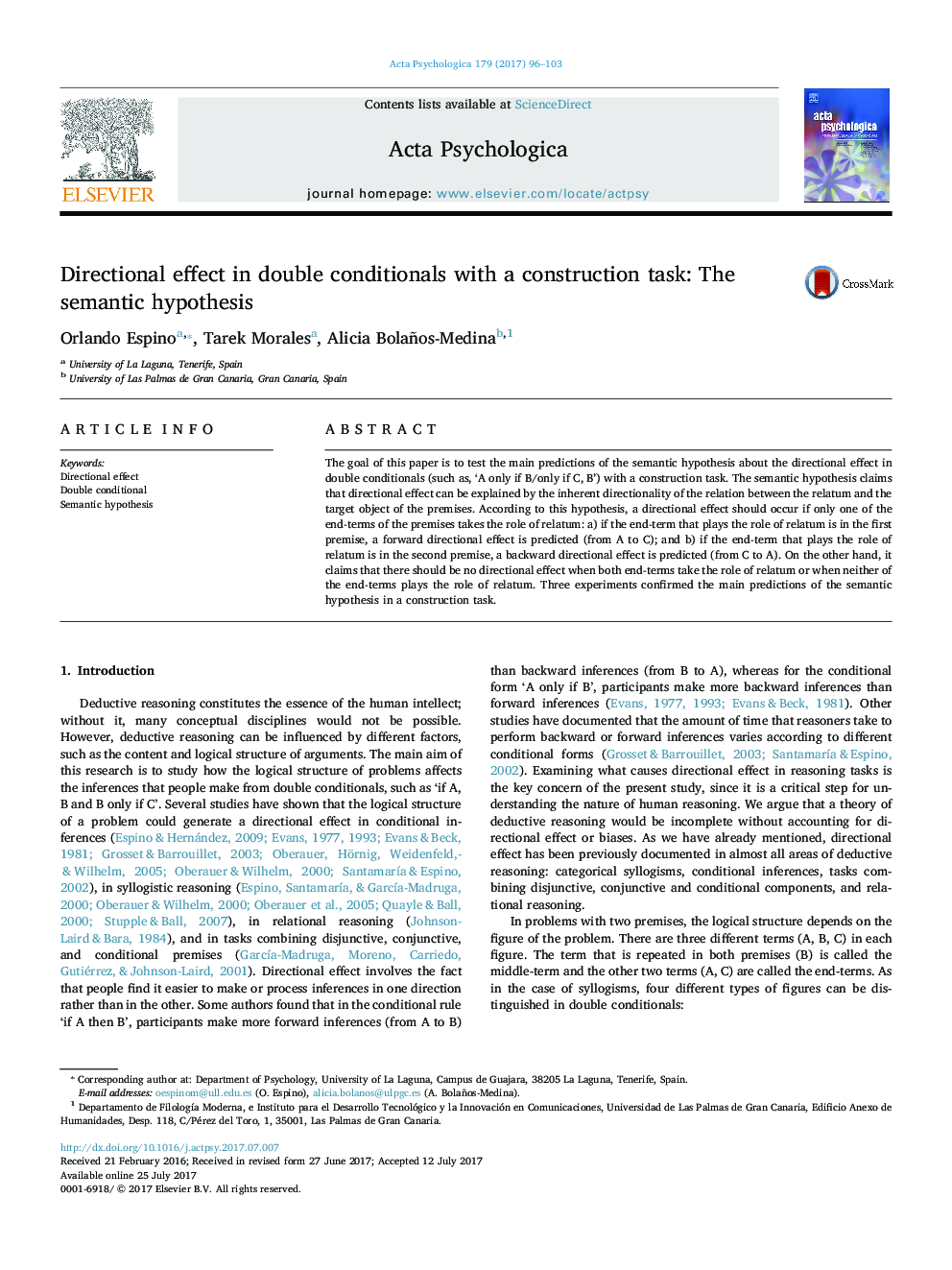| Article ID | Journal | Published Year | Pages | File Type |
|---|---|---|---|---|
| 5040227 | Acta Psychologica | 2017 | 8 Pages |
â¢We tested the semantic hypothesis on directional effect in double conditionals.â¢We used the four figures of double conditionals in a construction task.â¢Results from three experiments confirmed the predictions of the semantic hypothesis.â¢Directional effect depends on which term of the premise plays the role of relatum.â¢Another important factor is in which premise that term is to be found.
The goal of this paper is to test the main predictions of the semantic hypothesis about the directional effect in double conditionals (such as, 'A only if B/only if C, B') with a construction task. The semantic hypothesis claims that directional effect can be explained by the inherent directionality of the relation between the relatum and the target object of the premises. According to this hypothesis, a directional effect should occur if only one of the end-terms of the premises takes the role of relatum: a) if the end-term that plays the role of relatum is in the first premise, a forward directional effect is predicted (from A to C); and b) if the end-term that plays the role of relatum is in the second premise, a backward directional effect is predicted (from C to A). On the other hand, it claims that there should be no directional effect when both end-terms take the role of relatum or when neither of the end-terms plays the role of relatum. Three experiments confirmed the main predictions of the semantic hypothesis in a construction task.
